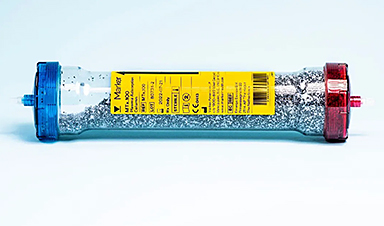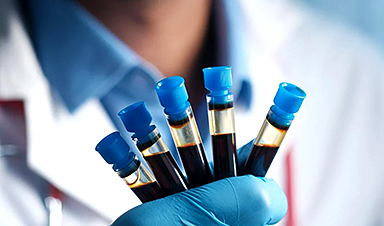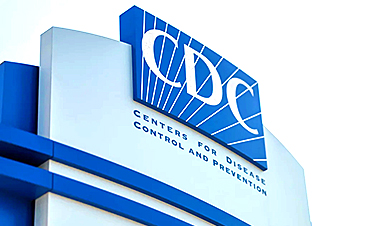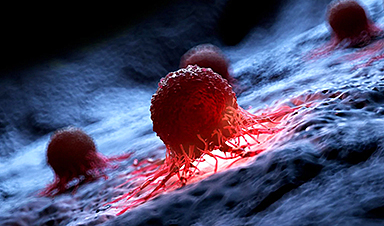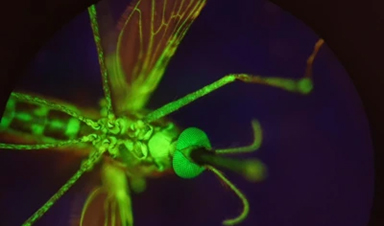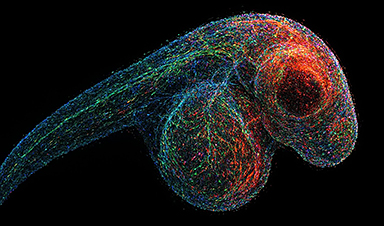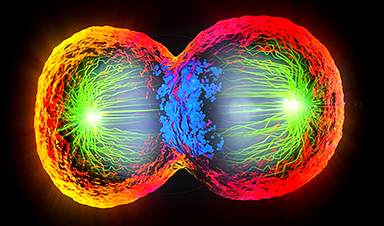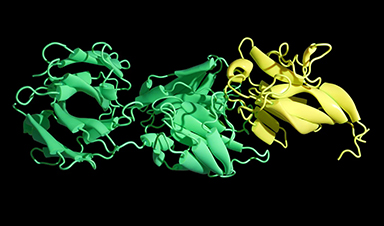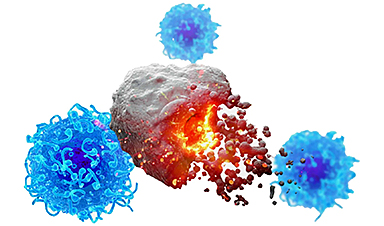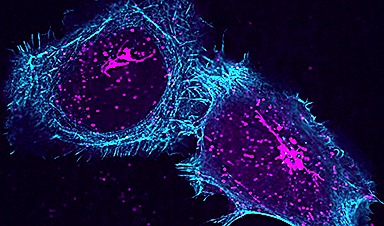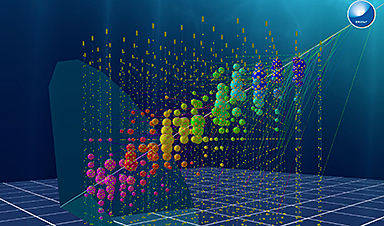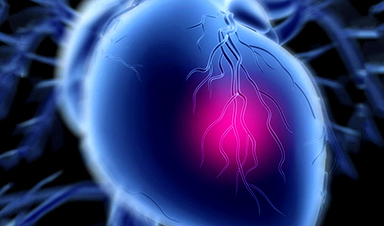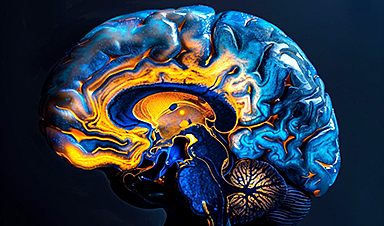Key Points
-
Monash researchers have developed a method to prepare elongated nanocrystals to deliver therapeutic drugs
-
Elongated nanocrystals can carry a high payload of drugs to potentially increase drug targetability and also decrease dosage frequency and side effects
- The researchers used a combination of deuteration, X-ray and neutron techniques at ANSTO to distinguish the three layers of the nanocrystal
Monash University researchers have used advanced techniques at ANSTO to investigate the production of new, elongated polymer nanocapsules with a high payload of drug nanocrystals to potentially increase drug targetability, and also decrease dosage frequency and side effects.
This method had not been investigated previously and represents a pioneering method of investigation in the field of colloidal science applications for drug delivery.
Nanoparticles have been used to increase the delivery efficiency of cancer therapy because of their biocompatibility, versatility and the easiness of functionalisation.
The team engineered novel elongated polymer nanocapsules, which are unlike the more well-known spherical nanocapsules.
The elongated polymer nanocapsules were made with elongated liposomes or surfactant vesicles and used drug nanocrystals as a template.
The results provided strong evidence that the elongated structure could be retained, and also confirmed that the loading method to form rod-like drug nanocrystals inside liposomes was a practical solution.
The combination of the high drug payload, in the form of encapsulated nanocrystals, and the non-spherical feature of liposomes represented a more efficient delivery system.
Spherical hollow nanocapsules have been studied extensively, but the formation of elongated nanocapsules containing active pharmaceuticals as therapeutic agents has been previously largely unsuccessful.
“There are difficulties in retaining the elongated shape and their encapsulation efficiency is low,” explained researcher Yunxin (Cindy) Xiao, a PhD candidate working in the Nonlaminar group with Prof Ben Boyd at the Monash Biomedicine Discovery Institute. and the recipient of the Australian Institute of Nuclear Science and Engineering Post Graduate Research Award.
“The elongated shape is better because it is more difficult for immune cells to internalise them and because their therapeutic efficiency at the target site can be maximised.”
After obtaining promising structural results using a liposomal template investigated using the small angle X-ray scattering beamline at ANSTO’s Australian Synchrotron and the small and ultra-small small-angle neutron scattering instruments Bilby and Kookaburra in previous research, the template was used to form elongated polymer nanocapsules.
The researchers used vesicles made of surfactants as templates, which allowed for the polymerisation of a less permeable shell inside these….
News
This Startup Says It Can Clean Your Blood of Microplastics
This is a non-exhaustive list of places microplastics have been found: Mount Everest, the Mariana Trench, Antarctic snow, clouds, plankton, turtles, whales, cattle, birds, tap water, beer, salt, human placentas, semen, breast milk, feces, testicles, [...]
New Blood Test Detects Alzheimer’s and Tracks Its Progression With 92% Accuracy
The new test could help identify which patients are most likely to benefit from new Alzheimer’s drugs. A newly developed blood test for Alzheimer’s disease not only helps confirm the presence of the condition but also [...]
The CDC buried a measles forecast that stressed the need for vaccinations
This story was originally published on ProPublica, a nonprofit newsroom that investigates abuses of power. Sign up to receive our biggest stories as soon as they’re published. ProPublica — Leaders at the Centers for Disease Control and Prevention [...]
Light-Driven Plasmonic Microrobots for Nanoparticle Manipulation
A recent study published in Nature Communications presents a new microrobotic platform designed to improve the precision and versatility of nanoparticle manipulation using light. Led by Jin Qin and colleagues, the research addresses limitations in traditional [...]
Cancer’s “Master Switch” Blocked for Good in Landmark Study
Researchers discovered peptides that permanently block a key cancer protein once thought untreatable, using a new screening method to test their effectiveness inside cells. For the first time, scientists have identified promising drug candidates [...]
AI self-cloning claims: A new frontier or a looming threat?
Chinese scientists claim that some AI models can replicate themselves and protect against shutdown. Has artificial intelligence crossed the so-called red line? Chinese researchers have published two reports on arXiv claiming that some artificial [...]
New Drug Turns Human Blood Into Mosquito-Killing Weapon
Nitisinone, a drug for rare diseases, kills mosquitoes when present in human blood and may become a new tool to fight malaria, offering longer-lasting, environmentally safer effects than ivermectin. Controlling mosquito populations is a [...]
DNA Microscopy Creates 3D Maps of Life From the Inside Out
What if you could take a picture of every gene inside a living organism—not with light, but with DNA itself? Scientists at the University of Chicago have pioneered a revolutionary imaging technique called volumetric DNA microscopy. It builds [...]
Scientists Just Captured the Stunning Process That Shapes Chromosomes
Scientists at EMBL have captured how human chromosomes fold into their signature rod shape during cell division, using a groundbreaking method called LoopTrace. By observing overlapping DNA loops forming in high resolution, they revealed that large [...]
Bird Flu Virus Is Mutating Fast – Scientists Say Our Vaccines May Not Be Enough
H5N1 influenza is evolving rapidly, weakening the effectiveness of existing antibodies and increasing its potential threat to humans. Scientists at UNC Charlotte and MIT used high-performance computational modeling to analyze thousands of viral protein-antibody interactions, revealing [...]
Revolutionary Cancer Vaccine Targets All Solid Tumors
The method triggers immune responses that inhibit melanoma, triple-negative breast cancer, lung carcinoma, and ovarian cancer. Cancer treatment vaccines have been in development since 2010, when the first was approved for prostate cancer, followed [...]
Scientists Uncover Hidden Protein Driving Autoimmune Attacks
Scientists have uncovered a critical piece of the puzzle in autoimmune diseases: a protein that helps release immune response molecules. By studying an ultra-rare condition, researchers identified ArfGAP2 as a key player in immune [...]
Mediterranean neutrino observatory sets new limits on quantum gravity
Quantum gravity is the missing link between general relativity and quantum mechanics, the yet-to-be-discovered key to a unified theory capable of explaining both the infinitely large and the infinitely small. The solution to this [...]
Challenging Previous Beliefs: Japanese Scientists Discover Hidden Protector of Heart
A Japanese research team found that the oxidized form of glutathione (GSSG) may protect heart tissue by modifying a key protein, potentially offering a novel therapeutic approach for ischemic heart failure. A new study [...]
Millions May Have Long COVID – So Why Can’t They Get Diagnosed?
Millions of people in England may be living with Long Covid without even realizing it. A large-scale analysis found that nearly 10% suspect they might have the condition but remain uncertain, often due to [...]
Researchers Reveal What Happens to Your Brain When You Don’t Get Enough Sleep
What if poor sleep was doing more than just making you tired? Researchers have discovered that disrupted sleep in older adults interferes with the brain’s ability to clean out waste, leading to memory problems [...]

